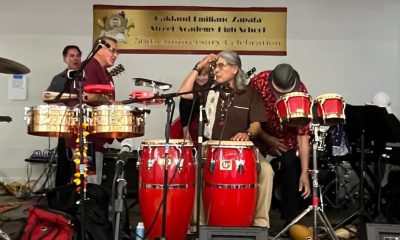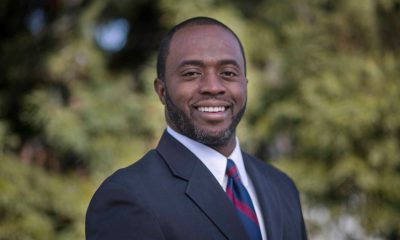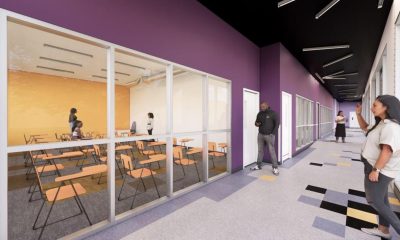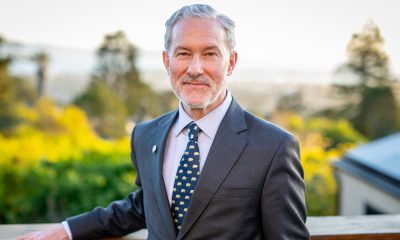Community
Climate-Induced Displacement is a Global Phenomenon, but Not Evenly Experienced
As world leaders presented their plans to combat rising global temperatures at the annual United Nations Climate Change Conference (COP 28) in Dubai from Nov. 30-Dec. 13, 2023, discussions are centered on how countries can cut greenhouse gas emissions and mitigate a dire environmental future. But a UC Berkeley researcher says that future is already here for millions of people displaced by the climate crisis. And those climate refugees are predominantly from formerly colonized countries that are not responsible, in large part, for the factors that exacerbate climate change.

UC Berkeley policy analyst from the Othering and Belonging Institute shares recommendations to protect people displaced from the climate crisis.
By Ivan Natividad
UC Berkeley News
As world leaders presented their plans to combat rising global temperatures at the annual United Nations Climate Change Conference (COP 28) in Dubai from Nov. 30-Dec. 13, 2023, discussions are centered on how countries can cut greenhouse gas emissions and mitigate a dire environmental future.
But a UC Berkeley researcher says that future is already here for millions of people displaced by the climate crisis. And those climate refugees are predominantly from formerly colonized countries that are not responsible, in large part, for the factors that exacerbate climate change.
Those nations — in the global south regions of Africa, Latin America, the Caribbean and much of Asia and Oceania — also lack the wealth and infrastructure to withstand intensifying natural disasters, rising sea levels and the collapse of industries dependent on stable climates, according to a recent Berkeley report.
“There are many examples of how global south countries face the brunt of a crisis they did not produce, due to the activities of countries and industries in the global north,” says report co-author Hossein Ayazi, a senior policy analyst at UC Berkeley’s Othering and Belonging Institute. “So, we want to help protect the most marginalized — climate-induced displaced persons — while targeting the sources of their marginalization.”
That is why the institute’s Global Justice Program recently launched an interactive database that helps both policymakers and impacted communities explore global data on climate-induced displacement. The report also offers strategies to ensure the protection of people displaced by the climate crisis, and climate resilience for them moving forward.
Ayazi said the research shows that sea levels are expected to rise drastically in the coming decades, which will impact nearly 40% of the world’s population that lives in coastal areas. And over 75% of all coastal populations — 90% of the world’s poor rural coastal areas — live in the global south.
Berkeley News spoke with Ayazi about what’s causing climate change displacement and what needs to happen to protect climate refugees and make their communities more resilient.
Berkeley News: Your research unpacks why people in the global south are more vulnerable to being displaced from the impacts of the climate crisis. What are some of the economic dimensions of this vulnerability?
Hossein Ayazi: Many countries in the global south have a relatively large percentage of their gross domestic product (GDP) derived from agriculture, forestry, and fishing — industries that are by nature more vulnerable to a changing climate.
In Ethiopia, for example, agriculture comprises almost 40% of its total GDP. That sector also employs over 80% of its population. So as these countries experience climate extremes — droughts, floods, increased temperatures and so on— their economies are impacted on a deep level.
A defining feature of countries in the global south is that their economies have been organized by, and to the benefit of, the global north — wealthier and powerful nations in North America and Europe. This means agricultural production that’s largely export-oriented, and not diversified, makes these countries especially inflexible and vulnerable to climate impacts.
Berkeley News: What other significant economic or financial factors cause or worsen climate-induced displacement?
Hossein Ayazi: Global south countries have a high external debt burden, with surcharges making things worse. In fact, global south debt payments in 2023 reached their highest level in 25 years.
This high debt burden means a poor sovereign credit rating, and a lack of fiscal space to invest in climate-resilient infrastructure and economies that can adequately respond to disasters. This is true at the individual and household level: When disaster strikes, it’s hard for people to manage when they are struggling financially.
Protecting climate refugees and affording people the right to stay in their communities means addressing such issues.
Berkeley News: While the focus of your data is on the global south, when you talk about climate displacement in this way it seems like it can happen anywhere — even in the United States.
Hossein Ayazi: It certainly can. Consider Hurricane Katrina in 2005. Residential segregation and decades of disinvestment in New Orleans’ levee infrastructure meant that when the storm hit, it would be the city’s poorer Black residents who would be displaced or lose their lives.
In the wildfires in Maui this year, we saw the inequalities in those communities exacerbated. Tourists had the means to reach safety and secure a place to stay, while many Native Hawaiians struggled to flee, save their homes, or recover afterward.
The climate crisis is a global phenomenon, but its impacts are not evenly experienced.
Berkeley News: Your research reveals that industries using extreme amounts of nonrenewable energy sources mostly come from wealthier countries in the global north. How do those industries affect the surrounding communities they inhabit?
Hossein Ayazi: Globally, we have come to be dependent on extractive, exploitative industries that might provide for some, but collectively harm us all, and certainly harm the people in closest proximity to them.
These industries are usually placed in marginalized communities in the global north — and in countries across the global south — and, rife with health and environmental impacts, they become mainstays of the broader economy.
Berkeley News: What is an example of this locally?
Hossein Ayazi: We can look to Richmond, California, and the Chevron oil refinery located there. Nearly 24% of the city’s general fund comes from the refinery, which also provides regional employment.
So, the question is: How do communities and countries become less dependent on these extractive industries that harm them, and us? How are these harms — past and present — addressed?
That’s the point of this work: Protecting peoples most harmed by the climate crisis, targeting the sources of the climate crisis, and building communities and economies that are just, sustainable and resilient against the climate crisis.
Berkeley News: What do world leaders need to do to make this vision a reality?
Hossein Ayazi: World leaders need to recognize the rights of people displaced by the climate crisis and across international borders. They also need to act upon demands for the transformational changes needed to materialize inclusive, just, and climate-resilient communities.
These demands entail ending the exploitation of land, resources and labor, and demilitarizing borders, among other key climate justice demands.
Berkeley News: What type of policy does your research recommend?
Hossein Ayazi: What we conceptualize as the “Right to Stay” is not only the right for climate-displaced people to safely resettle when their lives are uprooted. It is also the right to stay in place amidst the climate crisis, and against the extractive and exploitative structures that are forcing them to move.
To be able to aid the transition to climate-resilient societies and regenerative economies globally — while protecting the world’s most marginalized and exploited people and communities — a Right to Stay policy platform entails:
- Legal rights for all peoples displaced by the climate crisis, within and across national borders
- Climate reparations to countries in the global south, whose vulnerability to the climate crisis follows centuries of global north extractive and exploitative political and economic activity
- Just transitions that democratize, decentralize, and diversify economic activity and (re)distribute resources and power
Berkeley News: Why should the general public care about people displaced by climate change?
Hossein Ayazi: To address the condition of climate displacement is to come at the work of climate justice from multiple angles — from worker protections to migrant rights to prison abolition to reparations for the harms of colonialism and slavery to food sovereignty, and so on.
These struggles for justice and self-determination are all connected, especially under the climate crisis.
It’s that work that we’re trying to hold together through this database, and through the reports and recommendations that accompany it. Our work aims to map and strengthen this global constellation of efforts by helping the public and policymakers understand the structural nature of climate displacement.
Berkeley News: How do we build climate resilience in our own communities?
Hossein Ayazi: It begins with organizing ourselves as renters, as students, as workers, as debtors and so on. It’s about all the ways that we can collectively determine and respond to the sources of hardship in our life, in ways that are connected to these other issues.
And it must be through a hopeful message, a message that we’re going to co-create the future that we all deserve to live in.
Activism
S.F. Black Leaders Rally to Protest, Discuss ‘Epidemic’ of Racial Slurs Against Black Students in SF Public School System
Parents at the meeting spoke of their children as no longer feeling safe in school because of bullying and discrimination. Parents also said that reported incidents such as racial slurs and intimidation are not dealt with to their satisfaction and feel ignored.

By Carla Thomas
San Francisco’s Third Baptist Church hosted a rally and meeting Sunday to discuss hatred toward African American students of the San Francisco Unified School District (SFUSD).
Rev. Amos C. Brown, president of the San Francisco NAACP and pastor of Third Baptist Church, along with leadership from local civil rights groups, the city’s faith-based community and Black community leadership convened at the church.
“There has been an epidemic of racial slurs and mistreatment of Black children in our public schools in the city,” said Brown. “This will not be tolerated.”
According to civil rights advocate Mattie Scott, students from elementary to high school have reported an extraordinary amount of racial slurs directed at them.
“There is a surge of overt racism in the schools, and our children should not be subjected to this,” said Scott. “Students are in school to learn, develop, and grow, not be hated on,” said Scott. “The parents of the children feel they have not received the support necessary to protect their children.”
Attendees were briefed last Friday in a meeting with SFUSD Superintendent Dr. Matt Wayne.
SFUSD states that their policies protect children and they are not at liberty to publicly discuss the issues to protect the children’s privacy.
Parents at the meeting spoke of their children as no longer feeling safe in school because of bullying and discrimination. Parents also said that reported incidents such as racial slurs and intimidation are not dealt with to their satisfaction and feel ignored.
Some parents said they have removed their students from school while other parents and community leaders called on the removal of the SFUSD superintendent, the firing of certain school principals and the need for more supportive school board members.
Community advocates discussed boycotting the schools and creating Freedom Schools led by Black leaders and educators, reassuring parents that their child’s wellbeing and education are the highest priority and youth are not to be disrupted by racism or policies that don’t support them.
Virginia Marshall, chair of the San Francisco NAACP’s education committee, offered encouragement to the parents and students in attendance while also announcing an upcoming May 14 school board meeting to demand accountability over their mistreatment.
“I’m urging anyone that cares about our students to pack the May 14 school board meeting,” said Marshall.
This resource was supported in whole or in part by funding provided by the State of California, administered by the California State Library via California Black Media as part of the Stop the Hate Program. The program is supported by partnership with California Department of Social Services and the California Commission on Asian and Pacific Islander American Affairs as part of the Stop the Hate program. To report a hate incident or hate crime and get support, go to CA vs Hate.
Bay Area
Mayor London Breed: State Awards San Francisco Over $37M for Affordable Housing
On April 30, Mayor London N. Breed announced San Francisco has been awarded more than $37.9 million in funding from the California Department of Housing and Community Development (HCD) as part of the State’s Multifamily Housing Program (MHP). The HCD loan will provide the final funding necessary for development of Casa Adelante – 1515 South Van Ness, a 168-unit affordable housing project located in San Francisco’s Mission District.
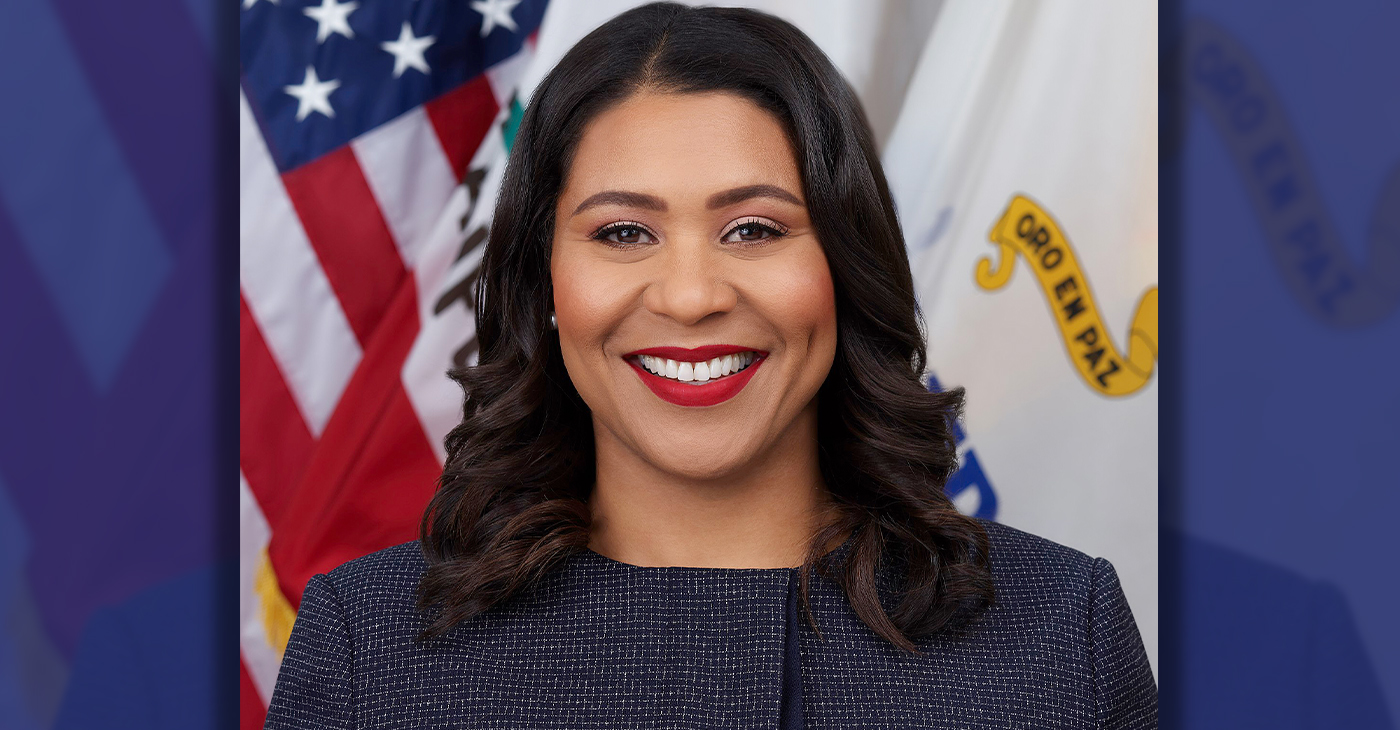
By Oakland Post Staff
On April 30, Mayor London N. Breed announced San Francisco has been awarded more than $37.9 million in funding from the California Department of Housing and Community Development (HCD) as part of the State’s Multifamily Housing Program (MHP).
The HCD loan will provide the final funding necessary for development of Casa Adelante – 1515 South Van Ness, a 168-unit affordable housing project located in San Francisco’s Mission District.
The new development at 1515 South Van Ness Ave. will provide 168 affordable homes to low-income families, formerly homeless families, and persons living with HIV earning between 25-80% of the San Francisco Area Median Income (AMI).
In addition, the project is anticipated to provide family-friendly amenities and ground floor community-serving commercial spaces that preserve the prevailing neighborhood character of the Calle 24 Latino Cultural District.
“This funding unlocks our ability to move on building affordable housing units for families in San Francisco at a crucial time. We understand the level of need for more housing that is accessible, and like the state, the city continues to face a challenging budget cycle,” said Breed. “1515 South Van Ness is a good example of what can be achieved in San Francisco when you have strong community partnerships and an unwavering commitment to deliver on critical needs for our residents.”
“From the beginning of my term as Supervisor, I have fought to bring affordable housing to 1515 South Van Ness” said Supervisor Hillary Ronen. “In the interim, the site has been utilized for homeless services and shelter, and I am thrilled that HCD has recognized the value of this development, and we are finally ready to break ground and bring 168 affordable homes to low income and formerly homeless families in the Mission.”
Owned and occupied by McMillan Electric Company until 2015, the City and County of San Francisco purchased 1515 South Van Ness Avenue in June 2019 with the intent of developing new affordable housing.
In November 2020, the San Francisco Mayor’s Office of Housing and Community Development (MOHCD) released a Multi-site Request for Qualifications (RFQ) seeking qualified developers to build affordable housing on the site, and subsequently selected Chinatown Community Development Corporation (CCDC) and Mission Economic Development Agency (MEDA) in May 2021 to develop the site.
The project is expected to begin construction in winter 2025.
“A strong, long-term push by Mission advocates to make this site 100% affordable is now paying off, with 168 family units that include services and childcare. People of color communities know what they need, and we are excited to be in partnership with a team, consisting of MEDA, CCDC, and MOHCD, that listens,” said Malcolm Yeung, Executive Director at CCDC.
“We are excited to be in partnership with CCDC, yet again, and for the opportunity to develop intergenerational affordable housing in the City’s Mission District,” said Luis Granados, executive director at MEDA.
Increasing housing affordable to lower-income and vulnerable residents is a key priority in the City’s Housing Element which calls for additional funding for affordable housing production and preservation, as well as Mayor Breed’s Housing for All Executive Directive that sets out the steps the City will take to meet the bold goal of allowing for 82,000 new homes to be built over the next eight years.
Tuesday’s funding announcement emphasizes the importance of regional and state collaboration in order to reach our housing and climate goals.
“We are thrilled—not just to bring a project of this size to a community with great need — but to do so with community-based developers and their partners who understand the neighborhood and sensitivities around cultural preservation,” said HCD Director Gustavo Velasquez.
Community
Opening Soon: Vibe Bistro Is Richmond’s New Hub for Coffee, Cuisine, Community and Culture
Vibe Bistro, located at 1503 MacDonald Ave., Suite B, Richmond, CA, is announcing its grand opening week, May 21-26, 2024. The café will be a hub where people can come together to enjoy coffee, cuisine, community, and culture, according to the establishment’s owner, Free Brown.

By Y’Anad Burrell
Vibe Bistro, located at 1503 MacDonald Ave., Suite B, Richmond, CA, is announcing its grand opening week, May 21-26, 2024.
The café will be a hub where people can come together to enjoy coffee, cuisine, community, and culture, according to the establishment’s owner, Free Brown.
“Vibe Bistro is Richmond’s neighborhood haven for soulful coffee, delicious food, and vibrant experiences. Vibe Bistro is not just a coffee shop; it’s a place where ‘coffee meets community” says Brown.
It occupies the space formerly known as the Richmond Food Hall, which was also the former location of OakStop Richmond.
During the grand opening week, folks are invited to join in celebrating the spirit of community. From Tuesday, May 21, Vibe Bistro will be open from 6 a.m. to 2 p.m. on weekdays, serving specialty coffees, convenient grab-n-go options, and delicious breakfast and lunch selections.
The official ribbon-cutting ceremony will be held on Thursday, May 23, from noon to 2 p.m., followed by surprise festivities that the owners say you will need to experience in-person to fully enjoy.
Vibe Bistro’s art exhibition opens May 23, through Sunday, May 26. It features a special artist talk led by renowned curator Jowhari Trahan, a story on glass, and a mural unveiling by Richmond’s own Nakari Syon.
Additionally, the community is invited to immerse themselves in artistic expression throughout the week with art and craft classes.
Get ready for ‘Feature Fridays’ at Vibe Bistro, where they will showcase the culinary creations of local food businesses. This initiative is not just about food, it’s about fostering a spirit of collaboration and community.
All local businesses are invited to be part of this exciting journey, says Brown.
For more information, visit www.VibeBistro.com, sign up for the newsletter to stay connected, and follow all social media platforms at @TheVibeBistro.
-

 Community3 weeks ago
Community3 weeks agoFinancial Assistance Bill for Descendants of Enslaved Persons to Help Them Purchase, Own, or Maintain a Home
-

 City Government5 days ago
City Government5 days agoCourt Throws Out Law That Allowed Californians to Build Duplexes, Triplexes and RDUs on Their Properties
-

 Business3 weeks ago
Business3 weeks agoV.P. Kamala Harris: Americans With Criminal Records Will Soon Be Eligible for SBA Loans
-

 Activism2 weeks ago
Activism2 weeks agoOakland Post: Week of April 24 – 30, 2024
-

 Activism4 weeks ago
Activism4 weeks agoOakland Post: Week of April 10 – 16, 2024
-

 Community3 weeks ago
Community3 weeks agoAG Bonta Says Oakland School Leaders Should Comply with State Laws to Avoid ‘Disparate Harm’ When Closing or Merging Schools
-

 Community3 weeks ago
Community3 weeks agoRichmond Nonprofit Helps Ex-Felons Get Back on Their Feet
-

 Community3 weeks ago
Community3 weeks agoOakland WNBA Player to be Inducted Into Hall of Fame

